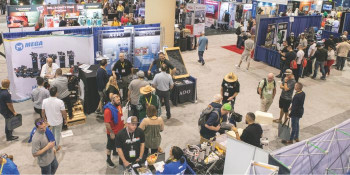Q&A Forums
Question regarding room extension venting Post New Topic | Post Reply
| Author | Comments |
|---|---|
|
Matthew Mark
Posted: Jan 10, 2013 04:02 PM
|
Question regarding room extension venting
Hello all,I'm getting our house extension bedroom sprayed. I live in Southern Ontario and the floors get really cold in the winter. The room is supported by a few concrete posts underneath (approx 36-40" height) and that section is walled by siding. The ground is packed dirt. Just got the joists (2x8 or 2x10 I believe) underneath the floor sprayed and wanted to confirm a few things. The walled area where the sprayfoam was done is closed, but not really sealed (ie the walls are not sprayfoamed), is this area considered vented? If so, I don't want to vapor barrier the foam inside the joists, correct? I also read on some threads that there you guys recommend using vapor barrier on the floor? If so, do you pin it to the wall or just lay it flat? Thanks, Matt Mark |
|
james keegan
Posted: Jan 11, 2013 07:09 PM
|
Hey Matt I think I can help you with this one. If you could let me know for sure what type of foam was sprayed into the floor joists and if it was sprayed from under the addition (up into joists) or down from above the floor joists. If I understand you have a crawlspace or cavity underneath an addition that is skirted and finished with siding on the outside so it matches seamless with the rest of the house. If this is the case you have effectively given yourself a thermal break between the floor and the ambient outside air. The skirt and any part of the floor that is on the exterior side of the foam, does not require a an additional vapour barrier. That is if you have used the closed cell 2lb foam. Most Ontario code and isnpectors accept 2lb as a vapour barrier. No need to spray the "walled" area, no need to add vapour barrier. Hope this helps...James |
|
Matthew Mark
Posted: Jan 12, 2013 12:07 AM
|
Hi JK, Thanks for responding - I believe it was closed cell foam and it was sprayed up into the joists. Currently the foam is not covered and is "sharing the air" with the hard packed dirt. The surrounding area is effectively paneled, although it's pretty old and there are a few holes in the wood that expose it a bit to the outside. Any further thoughts would be appreciated. Thanks, Matt |
|
Chicago Spray Foam
Posted: Jan 12, 2013 12:39 AM
|
One thing that we'll do is add closed spray foam insulation around the exposed floor joist and the underside of the floor. This encapsulates the joist and helps prevent vapor drive into the joist leading to high moisture content and also minimizes thermal bridging (we usually charge extra for this). As for the vapor barrier on the floor, we wouldn't do it when it's just a skirting. It's too easy for rodents to make their way in as well as flood water without a true foundation wall. |
|
mason
Posted: Jan 16, 2013 09:02 PM
|
Sorry to get to this question late. The spacewould be considered vented if it has openings to the outside, and unvented if it does not and only has a access hatch. In either event, the ground typically has a much higher moisture content than the rest of the space, and a vapor retarder on the ground (plastic sheating) can reduce the amount of moisture that would enter the foam. Yes closed cell sprayfoam is a relative vapor retarder but, if there is a high moisture content in soil, a moisture drive could be created that would eventually enter the foam and pass through to the wood. A hygrothermal calculation could determine if there is a potential for condensation in your particular circumstance, or just be safe and install the plastic. Check out articles about basements and crawls spaces at buildingscience.com . Lots of good information and design details to choose from. |
|
Matthew Mark
Posted: Jan 17, 2013 10:02 AM
|
great, thank you to everyone for your help! |





























